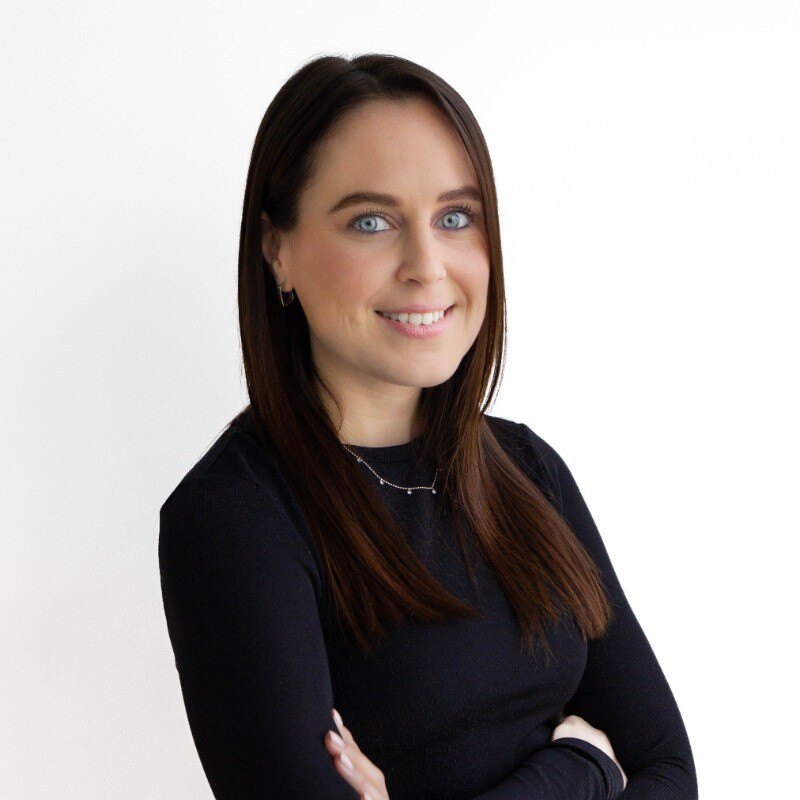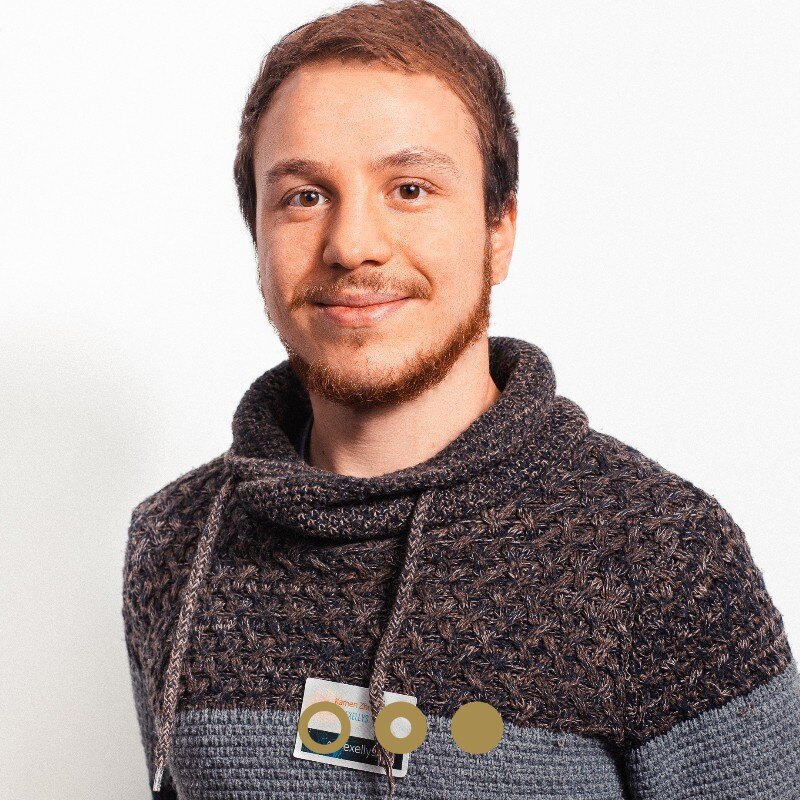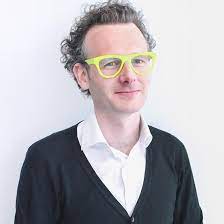
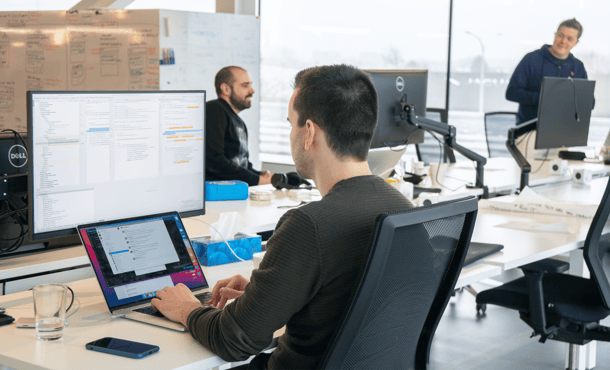
Every year ACA organizes a Ship-IT Day. Different teams, which are composed on the basis of skills and interests, try to solve (potential) problems of customers in one day. They work out innovative ideas and explore new technology.
1. Spot the free charging spot
Anyone who has been following ACA for a while knows that we are fully engaged in greening our vehicle fleet. In order to continue to grow, we must provide sufficient charging options. In addition, the 'facilities & fleet' manager wants to map the use of charging stations and parking spaces in order to consider further optimizations and investments. For example, how many charging stations are not in use at a given moment, even though parking is taking place?
Together with Mobility+, our partner and supplier of charging stations, some ACAs built a dashboard using Azure that optimizes the use of parking spaces and justifies potential investments with real-time data.
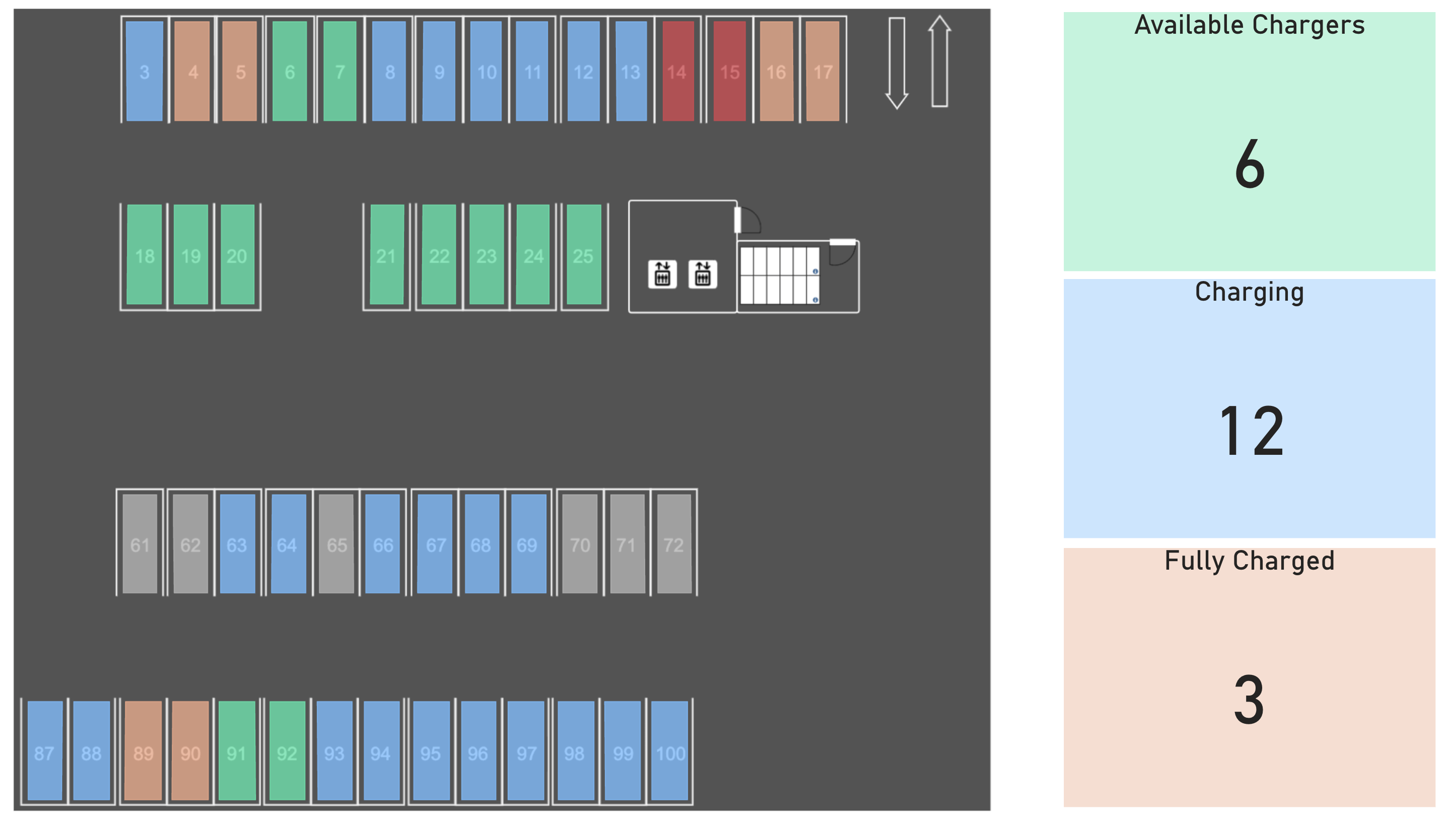
The dashboard offers an overview of the status (free or occupied) of the charging stations in the underground car park of our office, in combination with the active charge-user. This allows the 'facilities & fleet' manager to see who is parked in the relevant parking lot and to consult other important data and metrics. Employees with an EV can use an application to see where parking is still possible.
2. Widgets & Home Automation
The second project is part of an existing case for a customer who specializes in windows and window extensions. We had already developed an application for this customer that offers a lot of interesting functionalities for users. For example, the possibility to consult the air quality at home. To create an even better user experience, the team delved into widgets during Ship-IT Day.
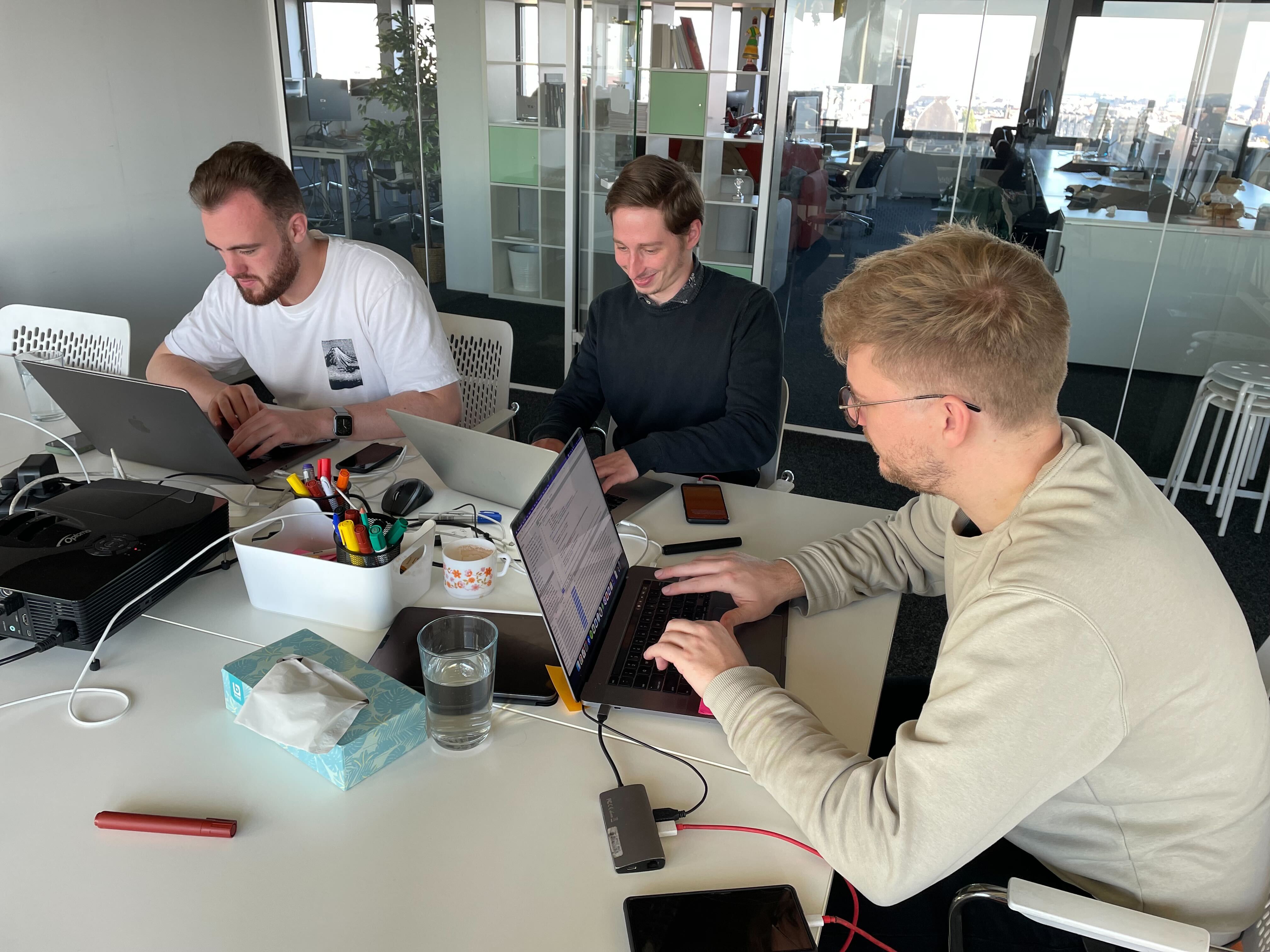
At the moment, users have to open the application every time to query the air quality. Since this can be a bit cumbersome at times, widgets now make it possible to send an alert without disrupting the daily flow and without requiring users to open the application beforehand. In other words, the team wanted to create an experience where the information automatically reaches the user.
The application itself is written in Xamarin.Forms. While this turned out to be quite simple for Android, for iOS a native widget extension had to be developed in Swift and SwiftUI. Finally, the option has also been added to ask Google Assistant about the air quality in the home.
3. UGent: Keyword matching
Ghent University has developed a mechanism that connects researchers and project proposals. Each researcher has its own bibliography from which the tool can extract information about expertise and research topics. And keywords are also extracted from the project proposals. Based on this, the Keyword Matcher makes a list of researchers and project proposals that match. Users can therefore quickly see which projects are of interest to researchers at Ghent University.
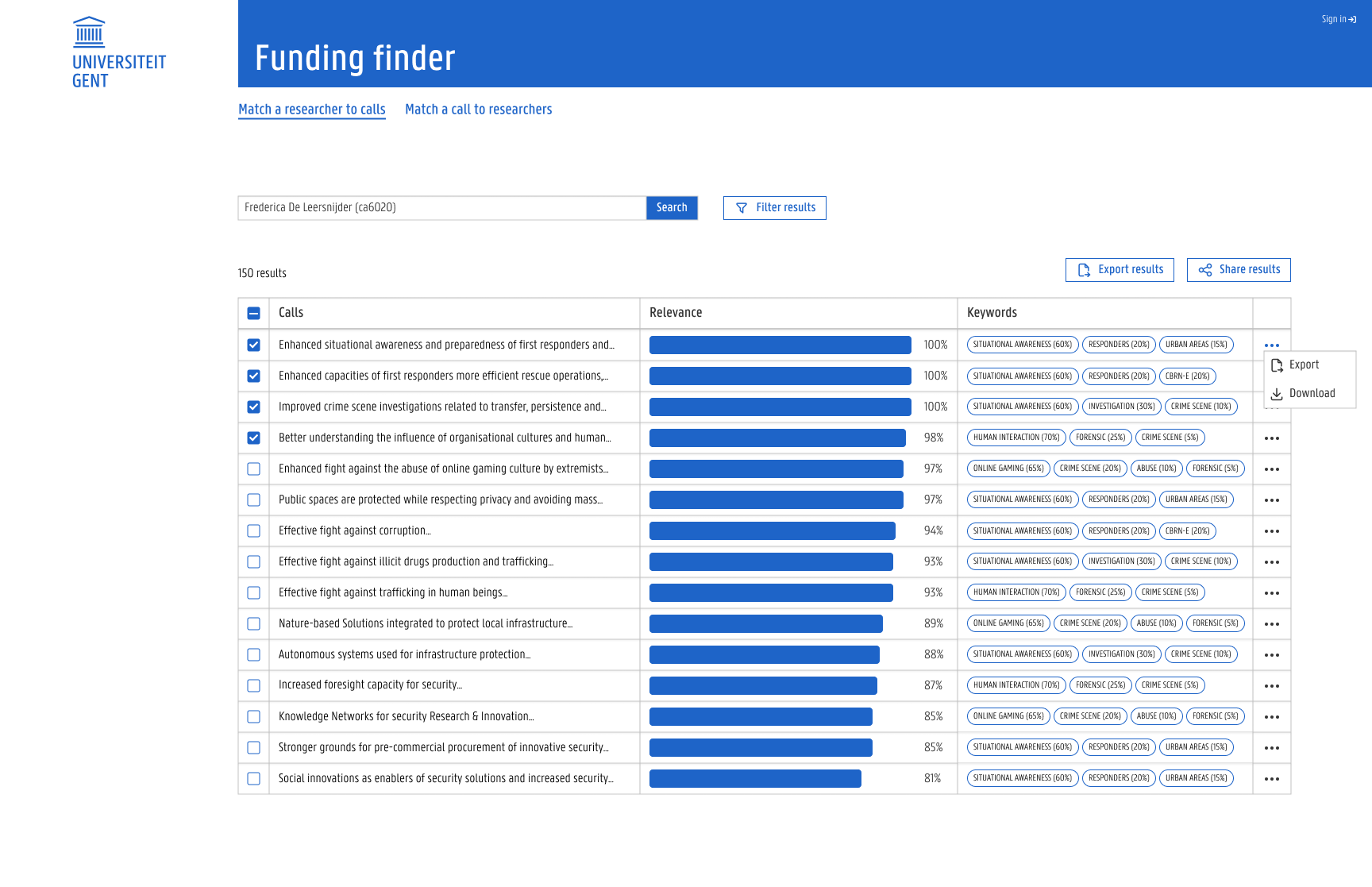
The Keyword Matcher was built by the university itself, but the tool could use some improvement, especially in terms of UX and UI. During a workshop, our Ship-IT Day team first looked for the user's pain points. For example, it was cumbersome to select a researcher and it was also not possible to share one specific result.
For the cumbersome selection of a researcher, the UI team developed a live search input field that can search for multiple things, such as name and first name, but also a unique ID per researcher. In addition, users now also have the option to export the complete list of results or a specific result or to share it directly via email with, for example, one or more researchers.
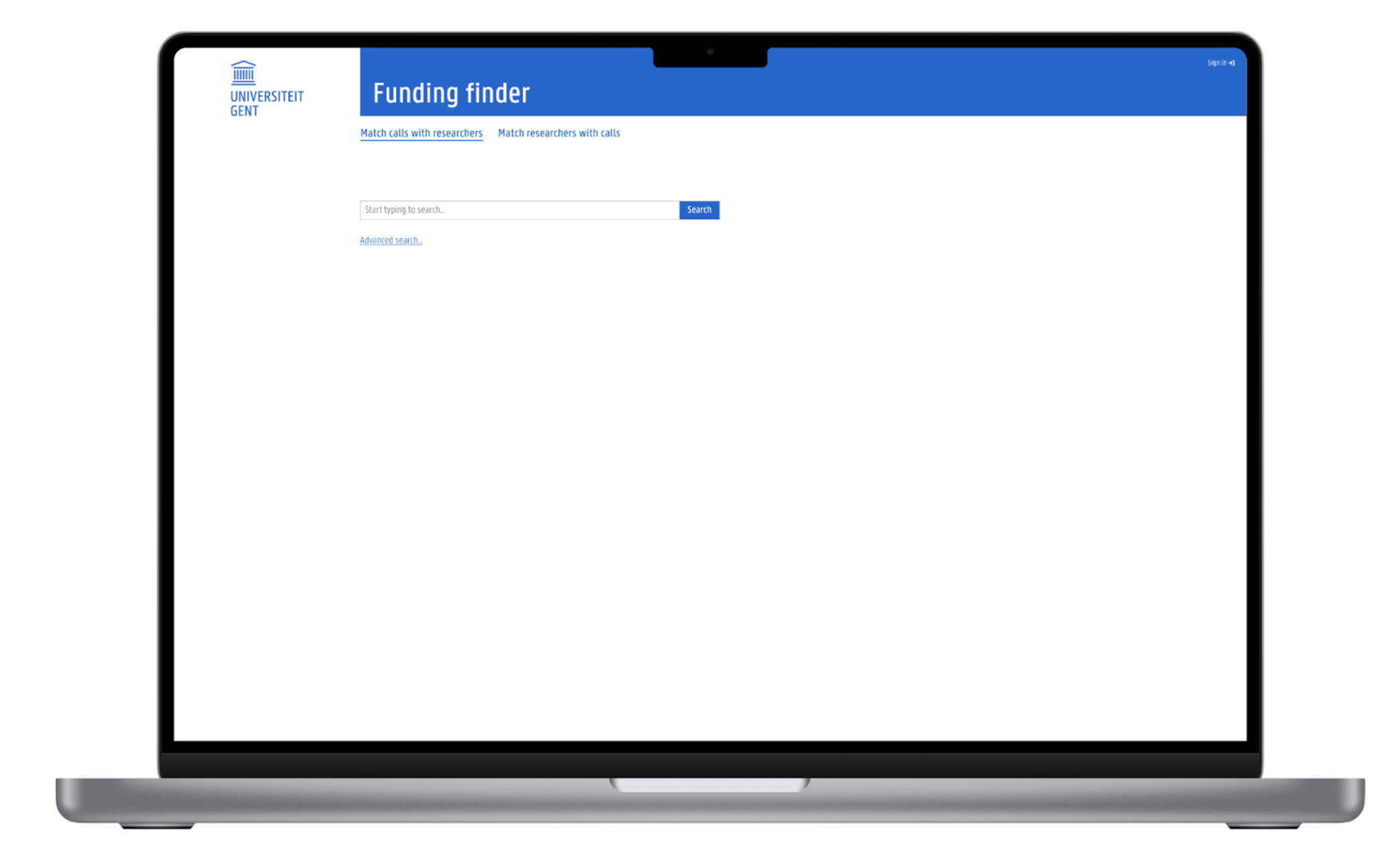
4. MyValipac - Micro Frontends
The fourth team wanted to transform various applications of our customer Valipac into one well-organized whole. To do this, they suggested building a new platform that could act as a kind of ecosystem. The focus was on the use of Micro Front Ends, with which the different business domains can be developed independently of each other. During the Ship-IT Day, the team wanted to guide the customer to the start of such a platform and also map the use and benefits of Micro Frontends for themselves.
The project was a great success. For example, the team found that the “assembly” of Micro Front Ends goes very smoothly if you use the module federation principles correctly.
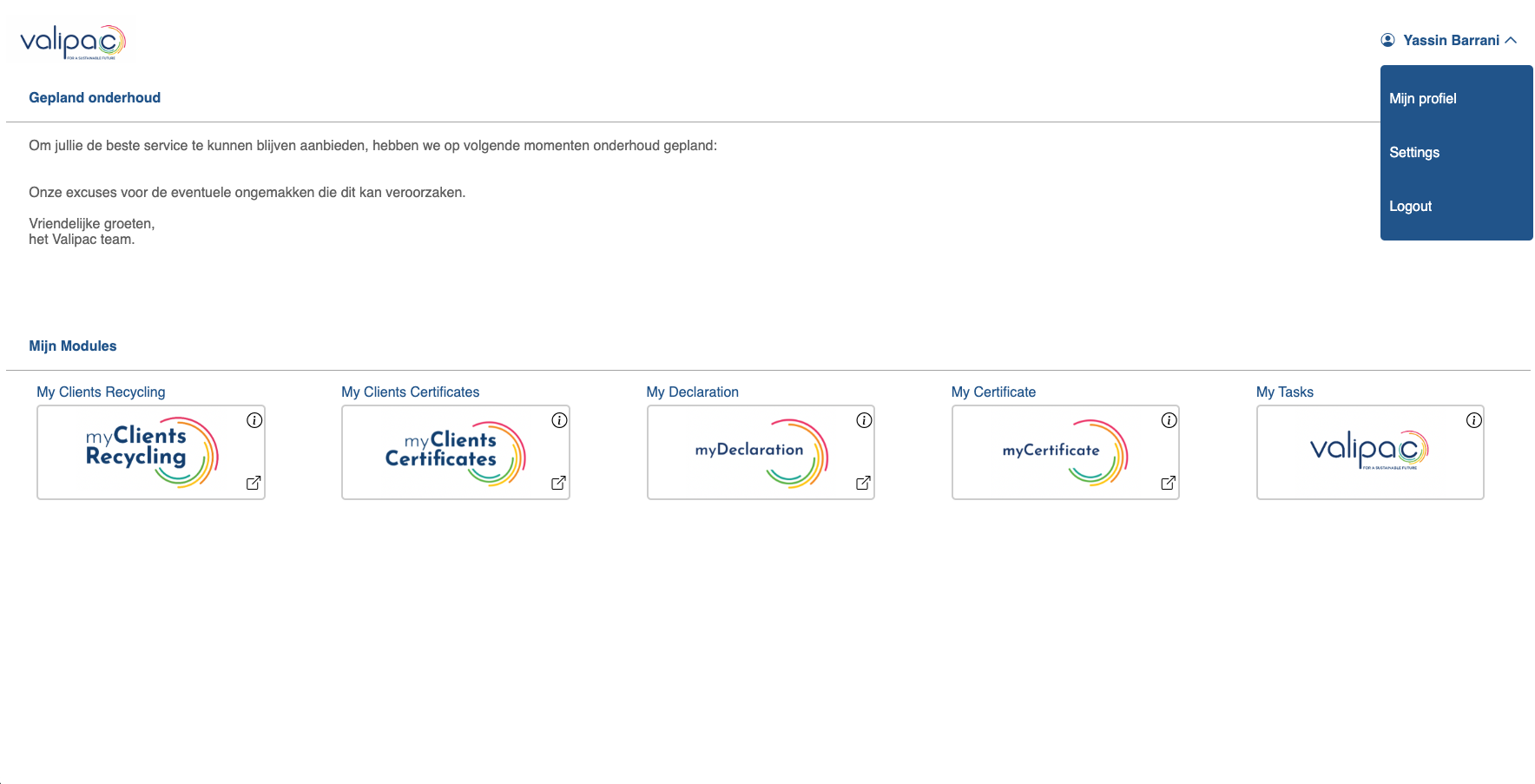
The end result is a POC of a platform that consists of:
- a login based on different user rights,
- a platform landing page,
- a maintenance page,
- a task list page (internal module that is called in the platform),
- a link with legacy providers (external modules that are called up in the platform).
For the end user, the platform has one UX and look & feel, in other words it feels like one entity. While the frontend actually consists of several separate micro frontends, and several separate services are called in the backend.
5. NFT ticketing system with fan tokens for clubs, tournaments and festivals
This team developed an NFT ticketing system with a virtual currency (fan token). NFTs are non-fungible tokens. The idea for Ship-IT Day was to develop a platform where fans can buy tickets online and receive fan tokens in exchange.

The fan tokens are redeemable on the platform and can be used by supporters to purchase goods or services, such as:
- Merchandising
- Voting (participation in e.g. T-shirt design, music, etc.)
- Live Meet-ups, autographed gadgets or VIP tickets
- ...
In addition, the Fan tokens in the Metaverse can be used to shop in your favorite Fan store through AR.
6. The Tech Radar
Tech Radar is an online virtualization tool that shows which technology choices are and are not available in an organization or team. Based on this, you can determine whether the necessary knowledge is already available in-house. And if so, where is that knowledge and how you can make full use of it in projects. The first version of the Tech Radar was developed earlier this year by a colleague who did an internship at ACA. Although the application already contained many functionalities, we wanted to further optimize and operationalize the tool throughout ACA during the Ship-IT Day.
The Tech Radar not only shows what knowledge and expertise we have in house, but also offers a visual representation of the evolution over time of a certain technology. Below you can see, for example, how often a tool is used within an organization.
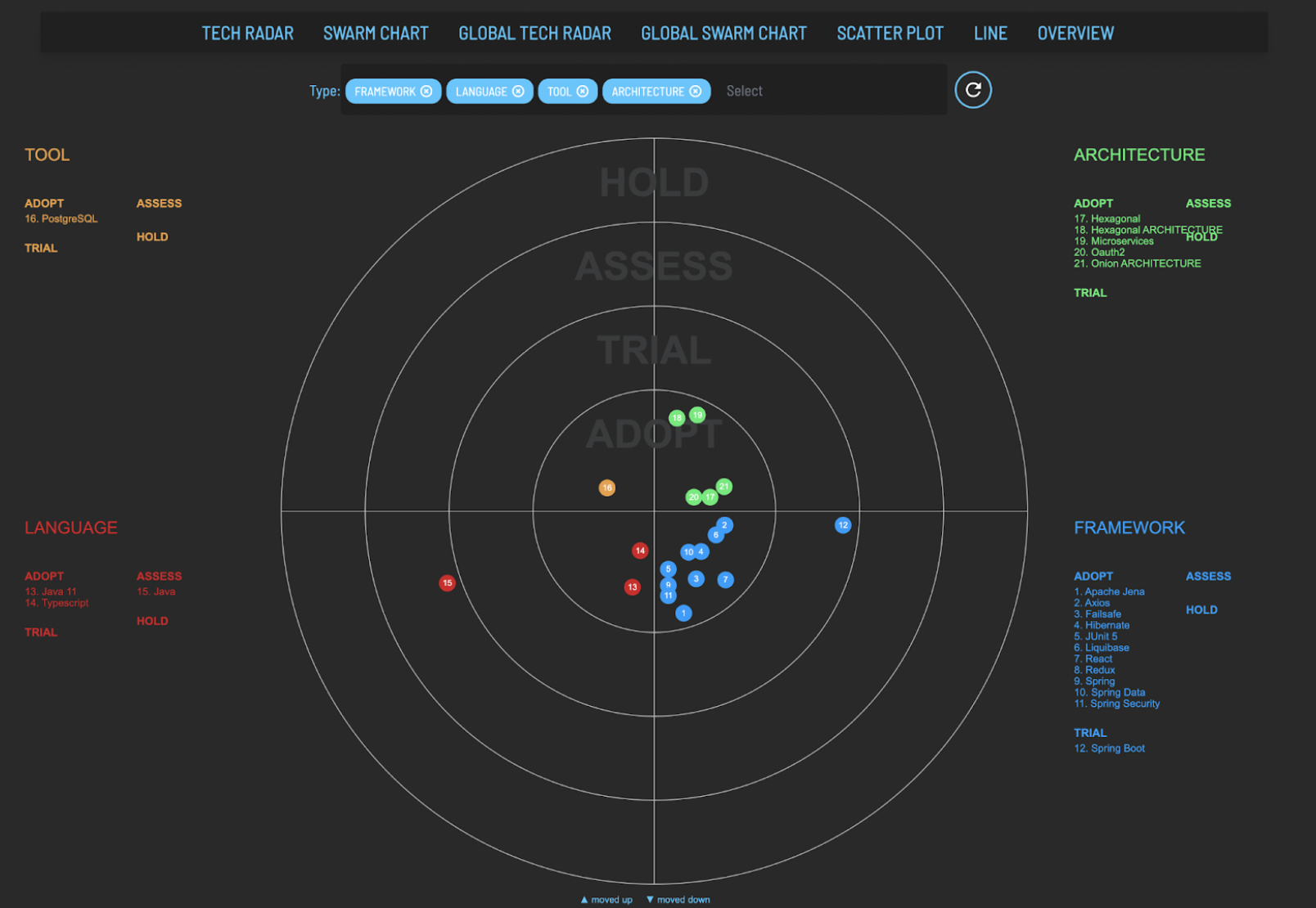
In addition to the classic visualization, there is also one with “quadrants” available. This not only shows whether a tool has been used, but also how much it is used within the organization. Depending on the popularity, the balls get bigger.
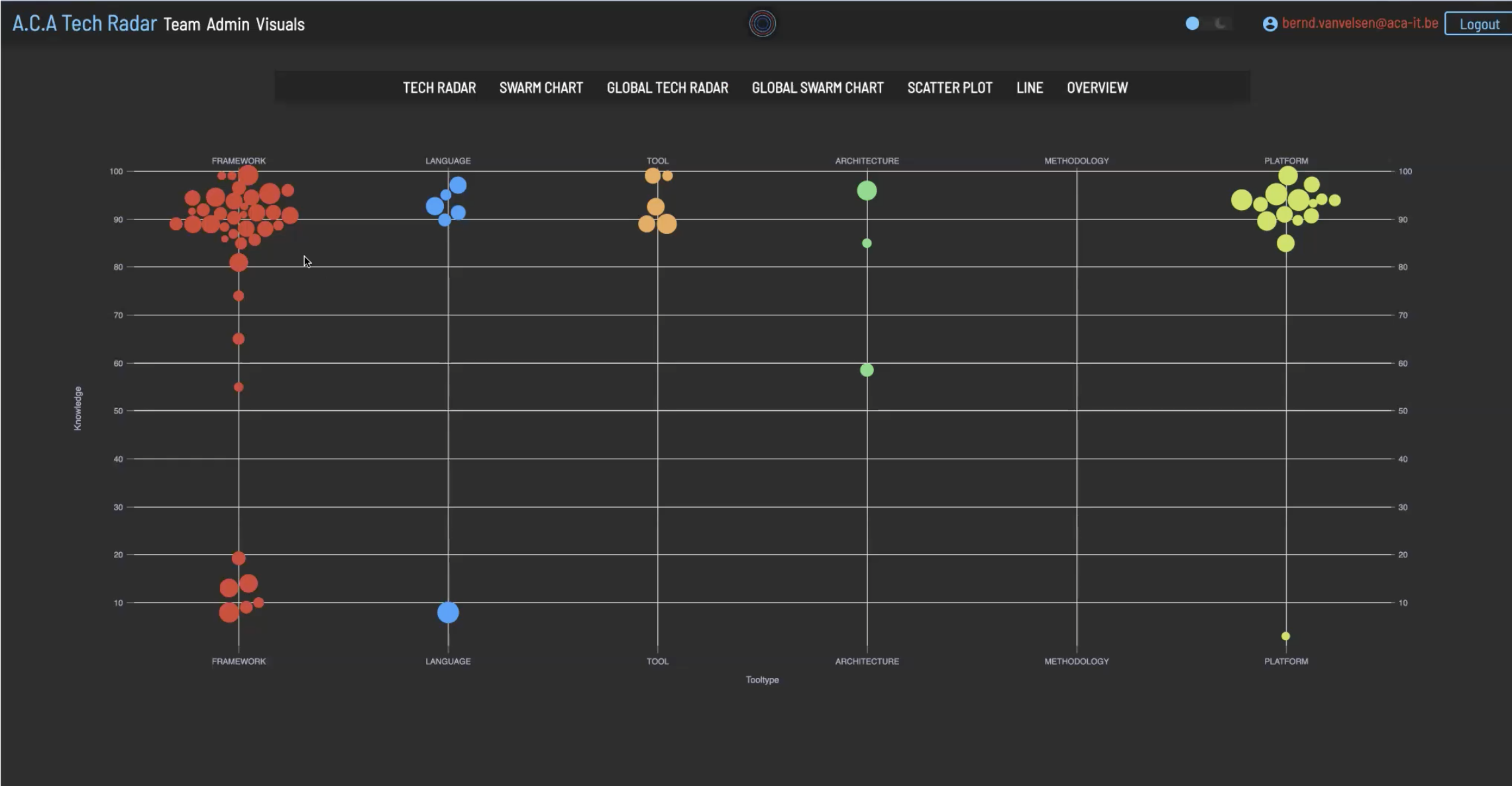
The last visualization shows a top 5 of the technologies that are most often worked with or of which the most knowledge is present within the organization.
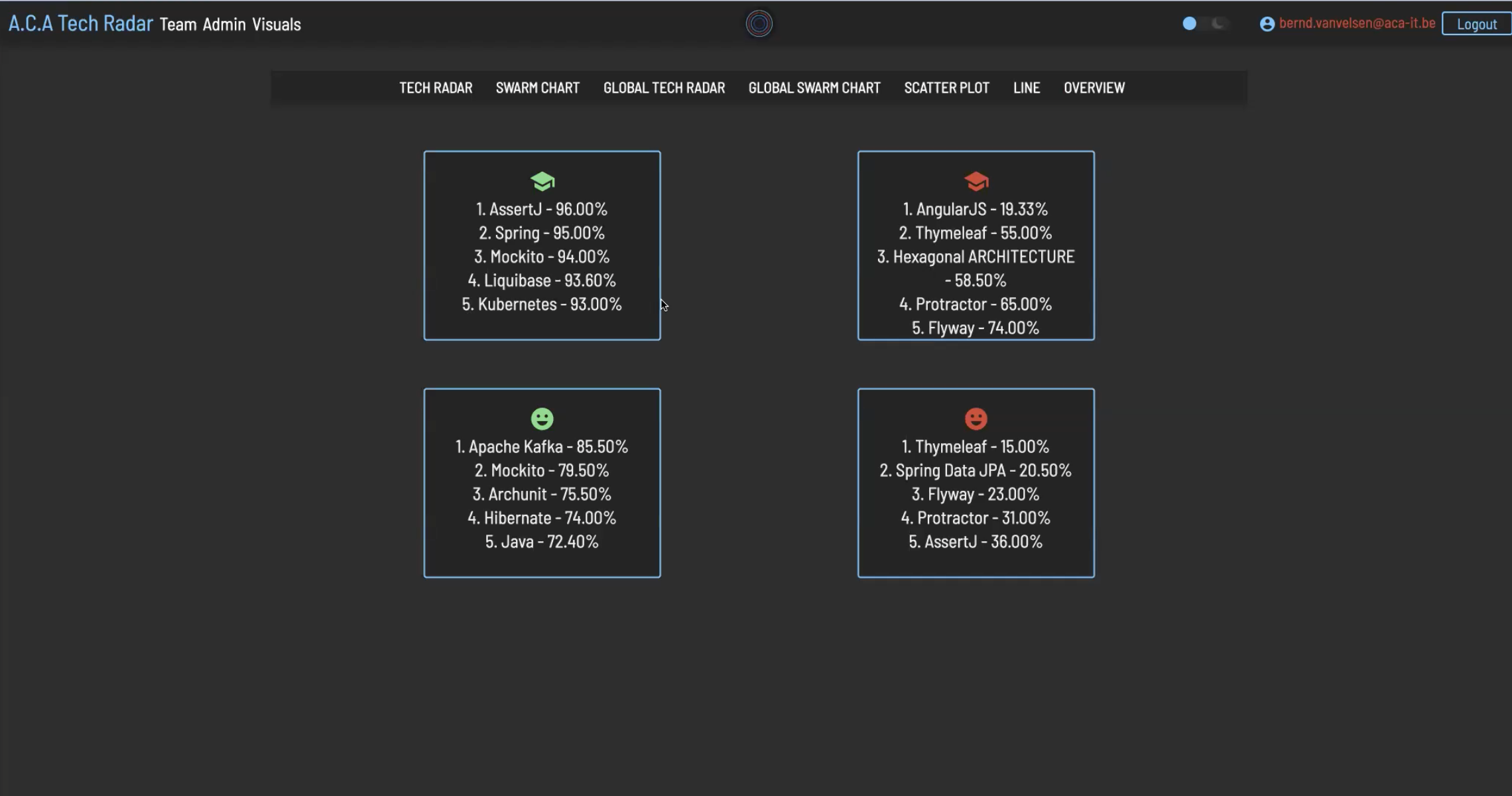
7. The Mobility+ charge card in your mobile wallet
Every employee with an EV will receive a charging card. This makes it possible to charge the car in various places, such as the underground car parks of our offices. The physical charge card is not always handy. Especially if you suddenly notice that you have forgotten your charge card. The charge card is also sometimes a bit cumbersome for our partner Mobility+. It costs money to produce the card, the charge card has to be sent by post, etc.
As a solution, this team came up with the idea to put the existing charge card in a mobile wallet in the existing Mobility+ app. Every time you log in to the app, you will arrive at the general screen with various assets, including the digital charge card. The mobile solution is not only convenient for daily use, new users no longer have to wait for their plastic card during onboarding. And it is even possible to start a charging session offline.
8. Chatbot integration for our customer
This project team started working for one of our customers, who remains anonymous.
Making the use of data or interactions easier through a conversational interface, that was the scope of the project of the last team and our client. At the beginning of the hackathon it became clear that this could not only offer an advantage on the website itself, but also provide onboarding flows on other media such as Facebook or Whatsapp. Or even to let partners do onboarding, while maintaining internal control.
Although no one had experience with it, the team members decided to get started with Power Virtual Agent. The big advantage of this tool is the possibility to work with several people on the same chatbot. One of the team members is a project manager who, despite a lack of technical knowledge, was able to build a lot himself thanks to the low-code capabilities of the tool.
It eventually resulted in a working chatbot that is able to collect the necessary information, do data validation (both locally and on server), and fully handle the effective registration. It is certainly the intention to further develop this story, possibly with other technology than during the hackathon.
And the winner is…
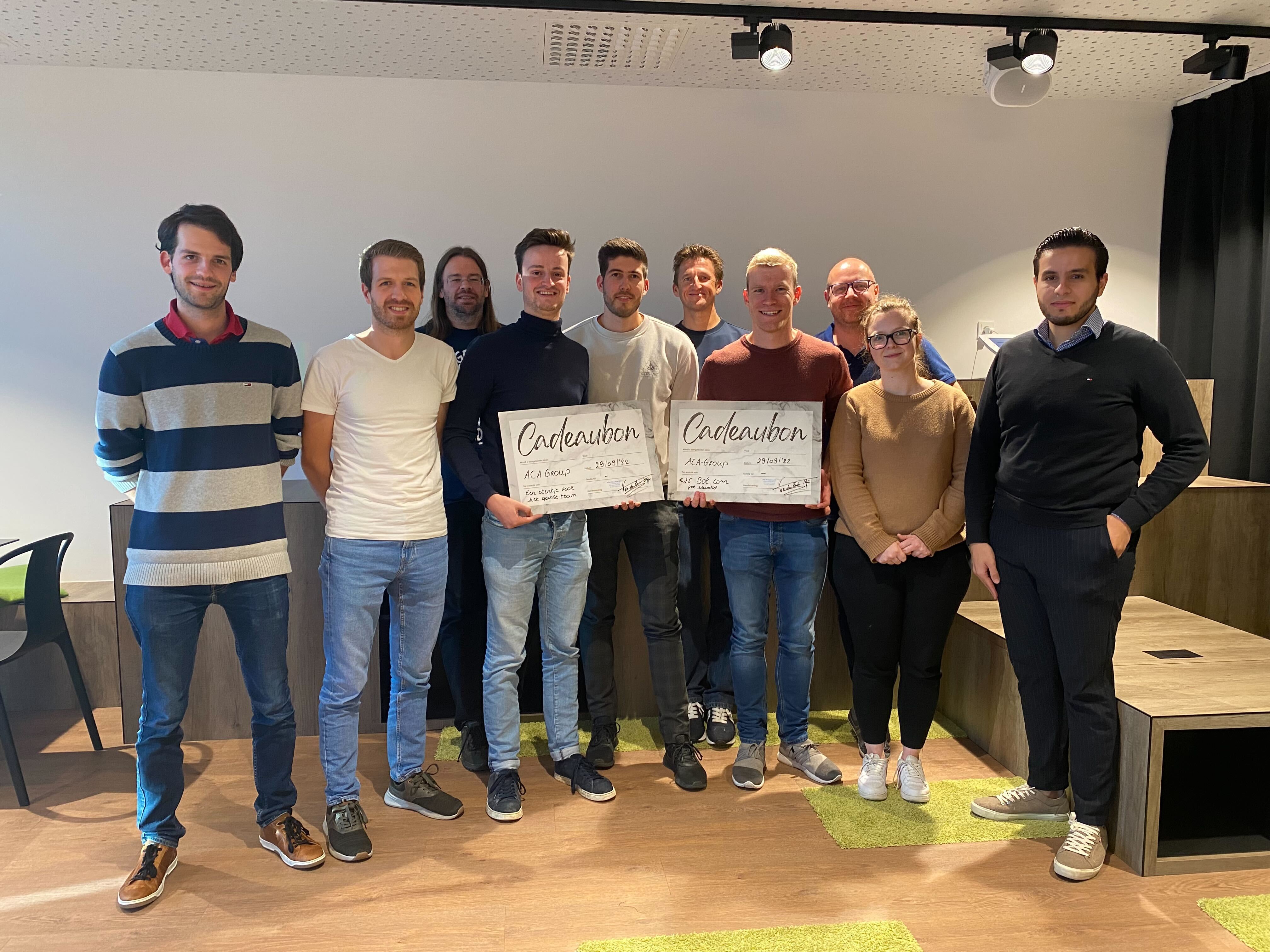
Project 1, 'Spot the free charging spot'! The winning team was rewarded with dinner and a CoolBlue voucher. Many of our employees voted for this project because of its innovative nature and added value for both ACA itself and for our customers.
What others have also read


At ACA, Ship-IT Days are no-nonsense innovation days.
Read more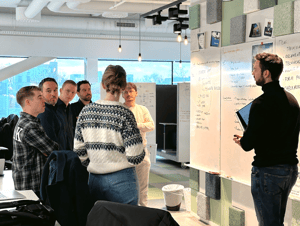
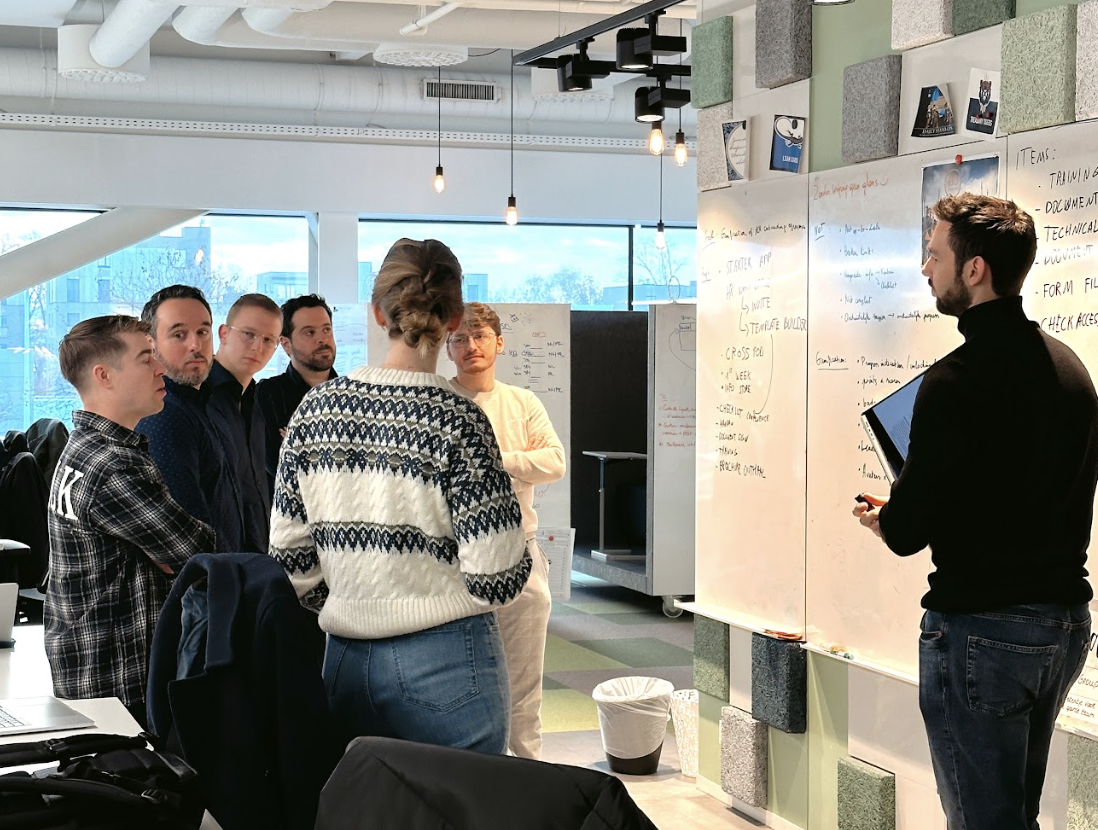
November 30, 2023 marked a highly anticipated day for numerous ACA employees. Because on Ship-IT Day, nine teams of ACA team members, whether or not supplemented with customer experts, delved into creating inventive solutions for customer challenges or for ACA Group itself. The hackathon proved to be both inspiring and productive, with at the end a deserved winner! The atmosphere in the ACA office in Hasselt was sizzling right from the early start. Eight out of the nine project teams were stationed here. During the coffee cake breakfast, you immediately felt that it was going to be an extraordinary day. There was a palpable sense of excitement among the project team members , as well as a desire to tackle the complex challenges ahead. 9 innovative projects for internal and external challenges 🚀 After breakfast, the eight project teams swarmed to their working habitat for the day. The ninth team competed in the ACA office in Leuven. We list the teams here: Chatbot course integration in customer portal System integration tests in a CI/CD pipeline Onboarding portal/platform including gamification Automatic dubbing, transcription and summary of conversations publiq film offering data import via ML SMOCS, Low level mock management system Composable data processing architecture Virtual employees Automated invoicing If you want to know more about the scope of the different project teams, read our first blog article Ship-IT Day 2023: all projects at a glance . Sensing the atmosphere in the teams Right before noon, we wondered how the teams had started and how their work was evolving. And so we went to take a quick look... 👀 1. Chatbot course integration in customer portal “After a short kick-off meeting with the customer, we divided the tasks and got to work straight away,” says Bernd Van Velsen. “The atmosphere is great and at the end of the day, we hope to present a result that will inspire the customer . In the best case, we will soon be able to use AI tools in a real customer project with the aim of making more optimal use of the customer's many data.” “The Ship-IT Day is an annual tradition that I like to participate in,” says Bernd. “Not only because it is great to collaborate with colleagues from other departments, but also because it is super educational.” 2. System integration tests in a CI/CD pipeline “We want to demonstrate that we can perform click tests in the frontend in an existing environment and verify whether everything works together properly,” says Stef Noten. “We can currently run the necessary tests locally, so we are good on schedule. The next step is to also make this work in our build pipeline. At the end of the day, we hope we will be able to run the tests either manually or scheduled on the latest version of the backend and frontend .” 3. Onboarding portal/platform including gamification The members of this project team all started at ACA fairly recently. And that is exactly what brought them together, because their goal was to develop a platform that makes the onboarding process for new employees more efficient and fun . Dieter Vennekens shared his enthusiasm with us, stating, "We kicked off with a brainstorming session to define the platform's requirements and goals. Subsequently, we reviewed these with the key users to ensure the final product aligns with their expectations. Our aim is to establish the basic structure before lunch, allowing us to focus on development and styling intensively in the afternoon. By the day's end, our objective is to unveil a functional prototype. This project serves as an opportunity to showcase the capabilities of Low-Code .” 4. Automatic dubbing, transcription and summary of conversations Upon entering their meeting room, we found the project team engrossed in their work, and Katrien Gistelinck provided a concise explanation for their business. "Our project is essentially divided into two aspects. Firstly, we aim to develop an automatic transcription and summary of a conversation . Concurrently, we are working on the live dubbing of a conversation, although we're uncertain about the feasibility of the latter within the day. It might be a tad ambitious, but we are determined to give it a try." She continued, "This morning, our focus was on defining the user flow and selecting the tools we'll utilize. Currently, multiple tasks are progressing simultaneously, addressing both the UI and backend components." 5. Publiq film offering data import via ML Comprising six publiq employees and three from ACA, this team engaged in an introductory round followed by a discussion of the project approach at the whiteboard. They then allocated tasks among themselves. Peter Jans mentioned, "Everyone is diligently working on their assigned tasks, and we maintain continuous communication. The atmosphere is positive, and we even took a group photo! Collaborating with the customer on a solution to a specific challenge for an entire day is energizing. " "At the close of the day, our objective is to present a functional demo showcasing the AI and ML (Machine Learning) processing of an email attachment, followed by the upload of the data to the UIT database. The outcome should be accessible on uitinvlaanderen.be ." Peter adds optimistically, "We're aiming for the win." That's the spirit, Peter! 6. SMOCS, Low level mock management system Upon our arrival, the SMOCS team was deeply engrossed in their discussions, making us hesitant to interrupt. Eventually, they graciously took the time to address our questions, and the atmosphere was undoubtedly positive. "We initiated the process with a brief brainstorming session at the whiteboard. After establishing our priorities, we allocated tasks accordingly. Currently, we are on track with our schedule: the design phase is largely completed, and substantial progress has been made with the API. We conduct a status check every hour, making adjustments as needed," they shared. "By the end of the day, our aim is to showcase an initial version of SMOCS , complete with a dashboard offering a comprehensive overview of the sent requests along with associated responses that we can adjust. Additionally, we have high hopes that the customized response will also show up in the end-user application." 7. Composable data processing architecture This project team aims to establish a basic architecture applicable to similar projects often centered around data collection and processing. Currently, customers typically start projects from scratch, while many building blocks could be reused via platform engineering and composable data. “Although time flies very quickly, we have already collected a lot of good ideas,” says Christopher Scheerlinck. “What do we want to present later? A very complex scheme that no one understands (laughs). No, we aspire to showcase our concepts for realizing a reusable architecture , which we can later pitch to the customer. Given that we can't provide a demo akin to other teams, we've already come to terms with the likelihood of securing second place!" 8. Virtual employees This team may have been the smallest of them all, but a lot of work had already been done just before noon. “This morning we first had a short meeting with the customer to discuss their expectations,” Remco Goyvaerts explains. “We then identified the priority tasks and both of us quickly got to work. The goal is to develop a virtual colleague who can be fed with new information based on AI and ML . This virtual colleague can help new employees find certain information without having to disturb other employees. I am sure that we will be able to show something beautiful, so at the moment the stress is well under control.” Chatbot technology is becoming more and more popular. Remco sees this Ship-IT project as the ideal opportunity to learn more about applications with long-term memory. “The Ship-It Day is a fantastic initiative,” says Remco. “It's wonderful to have the opportunity to break away from the routine work structure and explore innovative ideas.” 9. Automated invoicing The client involved in this project handles 50,000 invoices annually in various languages. The objective is to extract accurate information from these invoices, translate it into the appropriate language, and convert it into a format easily manageable for the customer . “Although we started quite late, we have already made great progress,” notes Bram Meerten. "We can already send the invoice to Azure, which extracts the necessary data reasonably well. Subsequently, we transmit that data to ChatGPT, yielding great results. Our focus now is on visualizing it in a frontend. The next phase involves implementing additional checks and solutions for line information that isn't processed correctly." Bram expresses enthusiasm for the Ship-IT Day concept, stating, "It's fun to start from scratch in the morning and present a functional solution at the end of the day. While it may not be finished to perfection, it will certainly be a nice prototype." And the winner is …. 🏆 At 5 p.m., the moment had arrived... Each team had the opportunity to showcase their accomplishments in a 5-minute pitch, followed by a voting session where everyone present could choose their favorite. All teams successfully presented a functional prototype addressing their customer's challenges. While the SMOCS team may not have managed to visualize their solution, they introduced additional business ideas with the SMOCintosh and the SMOCS-to-go food concept. However, these ideas fell just short of securing victory. In a thrilling final showdown, the team working on the onboarding platform for ACA came out as the winners! Under the name NACA (New at ACA), they presented an impressive prototype of the onboarding platform, where employees gradually build a rocket while progressing through their onboarding journey. Not only was the functionality noteworthy, but the user interface also received high praise. Congratulations to the well-deserving winners! Enjoy your shopping and dinner vouchers. 🤩 See you next year!
Read more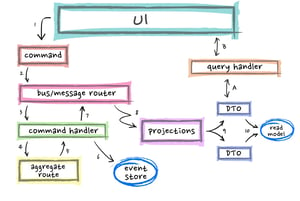
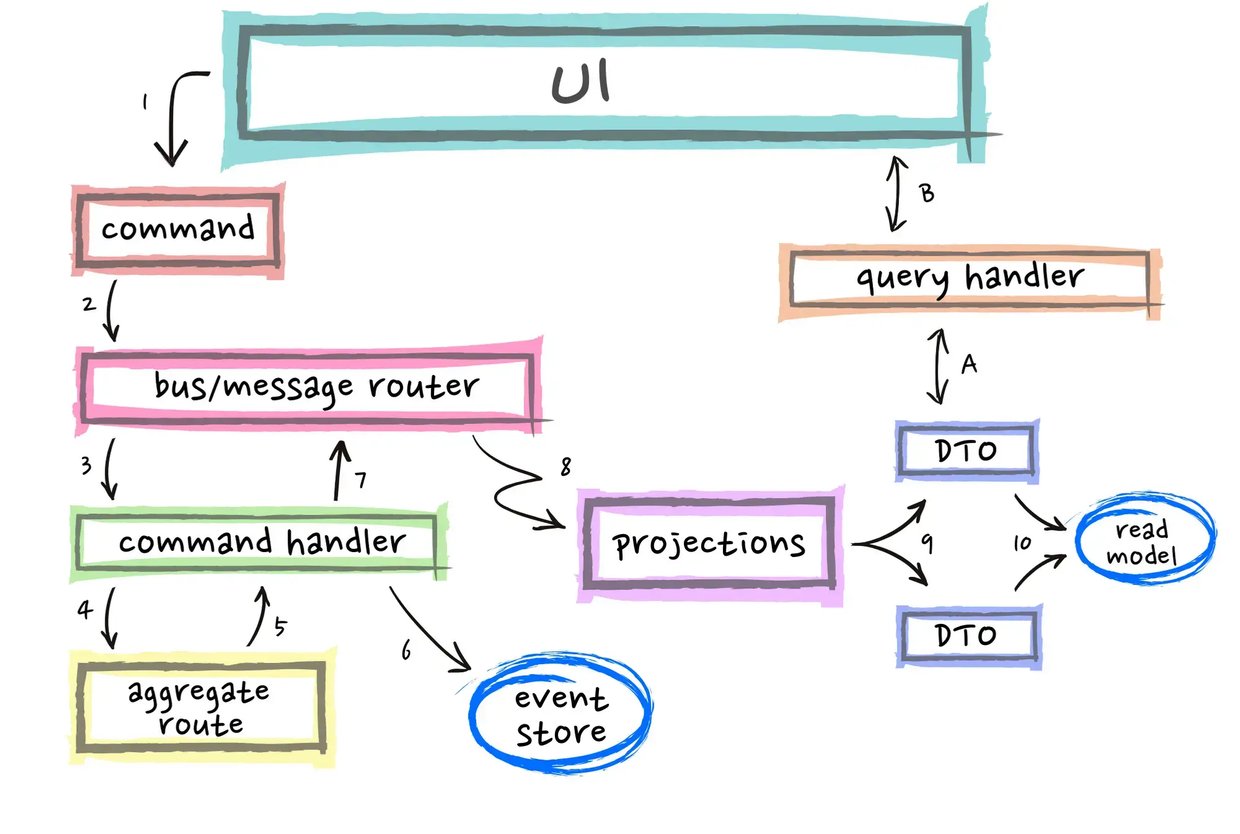
Staying current with the latest trends and best practices is crucial in the rapidly evolving world of software development. Innovative approaches like EventSourcing and CQRS can enable developers to build flexible, scalable, and secure systems. At Domain-Driven Design (DDD) Europe 2022 , Paolo Banfi delivered an enlightening talk on these two techniques. What is EventSourcing? EventSourcing is an innovative approach to data storage that prioritises the historical context of an object. Rather than just capturing the present state of an object, EventSourcing stores all the events that led to that state. Creating a well-designed event model is critical when implementing EventSourcing. The event model defines the events that will be stored and how they will be structured. Careful planning of the event model is crucial because it affects the ease of data analysis. Modifying the event model after implementation can be tough, so it's important to get it right from the beginning. What is CQRS CQRS (Command Query Responsibility Segregation) is a technique that separates read and write operations in a system to improve efficiency and understandability. In a traditional architecture, an application typically interacts with a database using a single interface. However, CQRS separates the read and write operations, each of which is handled by different components. Combining EventSourcing and CQRS One of the advantages of combining EventSourcing and CQRS is that it facilitates change tracking and data auditing. By keeping track of all the events that led to a particular state, it's easier to track changes over time. This can be particularly useful for applications that require auditing or regulation. Moreover, separating read and write operations in this way provides several benefits. Firstly, it optimises the system by reducing contention and improving scalability. Secondly, it simplifies the system by isolating the concerns of each side. Finally, it enhances the security of sensitive data by limiting access to the write side of the system. Another significant advantage of implementing CQRS is the elimination of the need to traverse the entire event stream to determine the current state. By separating read and write operations, the read side of the system can maintain dedicated models optimised for querying and retrieving specific data views. As a result, when querying the system for the latest state, there is no longer a requirement to traverse the entire event stream. Instead, the optimised read models can efficiently provide the necessary data, leading to improved performance and reduced latency. When to use EventSourcind and CQRS It's important to note that EventSourcing and CQRS may not be suitable for every project. Implementing EventSourcing and CQRS can require more work upfront compared to traditional approaches. Developers need to invest time in understanding and implementing these approaches effectively. However, for systems that demand high scalability, flexibility or security, EventSourcing and CQRS can provide an excellent solution. Deciding whether to use CQRS or EventSourcing for your application depends on various factors, such as the complexity of your domain model, the scalability requirements, and the need for a comprehensive audit trail of system events. Developers must evaluate the specific needs of their project before deciding whether to use these approaches. CQRS is particularly useful for applications with complex domain models that require different data views for different use cases. By separating the read and write operations into distinct models, you can optimise the read operations for performance and scalability, while still maintaining a single source of truth for the data. Event Sourcing is ideal when you need to maintain a complete and accurate record of all changes to your system over time. By capturing every event as it occurs and storing it in an append-only log, you can create an immutable audit trail that can be used for debugging, compliance, and other purposes. Conclusion The combination of EventSourcing and CQRS can provide developers with significant benefits, such as increased flexibility, scalability and security. They offer a fresh approach to software development that can help developers create applications that are more in line with the needs of modern organisations. If you're interested in learning more about EventSourcing and CQRS, there are plenty of excellent resources available online. Conferences and talks like DDD Europe are also excellent opportunities to stay up-to-date on the latest trends and best practices in software development. Make sure not to miss out on these opportunities if you want to stay ahead of the game! The next edition of Domain-Driven Design Europe will take place in Amsterdam from the 5th to the 9th of June 2023. Did you know that ACA Group is one of the proud sponsors of DDD Europe? {% module_block module "widget_bc90125a-7f60-4a63-bddb-c60cc6f4ee41" %}{% module_attribute "buttons" is_json="true" %}{% raw %}[{"appearance":{"link_color":"light","primary_color":"primary","secondary_color":"primary","tertiary_color":"light","tertiary_icon_accent_color":"dark","tertiary_text_color":"dark","variant":"primary"},"content":{"arrow":"right","icon":{"alt":null,"height":null,"loading":"disabled","size_type":null,"src":"","width":null},"tertiary_icon":{"alt":null,"height":null,"loading":"disabled","size_type":null,"src":"","width":null},"text":"More about ACA Group"},"target":{"link":{"no_follow":false,"open_in_new_tab":false,"rel":"","sponsored":false,"url":{"content_id":null,"href":"https://acagroup.be/en/aca-as-a-company/","href_with_scheme":"https://acagroup.be/en/aca-as-a-company/","type":"EXTERNAL"},"user_generated_content":false}},"type":"normal"}]{% endraw %}{% end_module_attribute %}{% module_attribute "child_css" is_json="true" %}{% raw %}{}{% endraw %}{% end_module_attribute %}{% module_attribute "css" is_json="true" %}{% raw %}{}{% endraw %}{% end_module_attribute %}{% module_attribute "definition_id" is_json="true" %}{% raw %}null{% endraw %}{% end_module_attribute %}{% module_attribute "field_types" is_json="true" %}{% raw %}{"buttons":"group","styles":"group"}{% endraw %}{% end_module_attribute %}{% module_attribute "isJsModule" is_json="true" %}{% raw %}true{% endraw %}{% end_module_attribute %}{% module_attribute "label" is_json="true" %}{% raw %}null{% endraw %}{% end_module_attribute %}{% module_attribute "module_id" is_json="true" %}{% raw %}201493994716{% endraw %}{% end_module_attribute %}{% module_attribute "path" is_json="true" %}{% raw %}"@projects/aca-group-project/aca-group-app/components/modules/ButtonGroup"{% endraw %}{% end_module_attribute %}{% module_attribute "schema_version" is_json="true" %}{% raw %}2{% endraw %}{% end_module_attribute %}{% module_attribute "smart_objects" is_json="true" %}{% raw %}null{% endraw %}{% end_module_attribute %}{% module_attribute "smart_type" is_json="true" %}{% raw %}"NOT_SMART"{% endraw %}{% end_module_attribute %}{% module_attribute "tag" is_json="true" %}{% raw %}"module"{% endraw %}{% end_module_attribute %}{% module_attribute "type" is_json="true" %}{% raw %}"module"{% endraw %}{% end_module_attribute %}{% module_attribute "wrap_field_tag" is_json="true" %}{% raw %}"div"{% endraw %}{% end_module_attribute %}{% end_module_block %}
Read moreWant to dive deeper into this topic?
Get in touch with our experts today. They are happy to help!

Want to dive deeper into this topic?
Get in touch with our experts today. They are happy to help!

Want to dive deeper into this topic?
Get in touch with our experts today. They are happy to help!

Want to dive deeper into this topic?
Get in touch with our experts today. They are happy to help!

